
 |
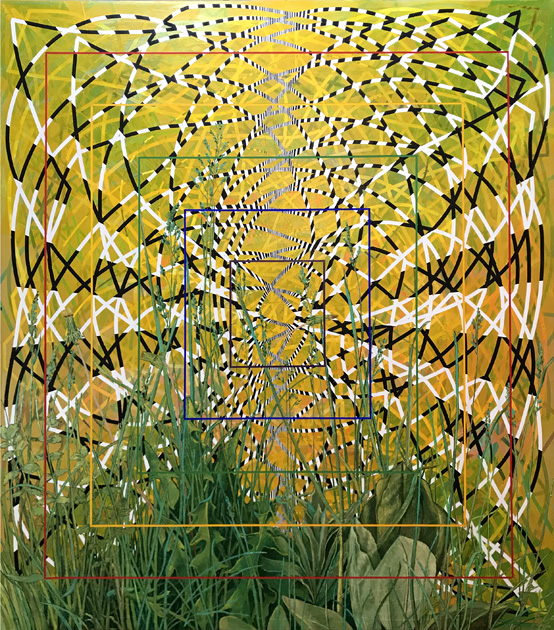
Aurora posits that Being itself is ecstatic - with the sun as the animating energy that activates everything in our orbit.
The sun/aurora/dawn is ecstasy and ignites ecstasy. The vegetation (a replication of Albrecht Dürer’s Great Piece of Turf ) represents rapture taking form. This visual quote along with the allusions to Bridget Riley and Frank Stella are intended to indicate an equivalency in terms of operation and nurturance between the ecosystems of Nature and Art.
Similar to the fleeting luminous forms of the Aurora Borealis, the process of creating the painting generated a sequence of transitory painterly referents. In addition to the Stella-inspired lines mapping the proportions of the canvas and the black and white burst evoking Riley’s Op Art paintings, there is a glimpse of Willem de Kooning’s Rosy-Fingered Dawn at Louse Point and an evocation of Alma Thomas’ radiant circle paintings that persist as pentimenti phantoms.
Other associations were not the result of strategy but rather the unforeseen efflorescence of enthusiasms. Notably, Aurora seems in dialogue with The Rose by Jay DeFeo – a work never far from my thinking and heart.
Also, lately I’ve been listening to Daniel Johnston’s astonishing “True Love Will Find You In The End” (my favorite version is his session at the KCRW studios featuring Lucius.
Speaking of Love, he asks:
“But how can it recognize you
Unless you step out into the light?"
This leads to the moment where Johnston enacts the meaning of the song by making a gift of his vulnerability: in a touching DIY audio effect he crafts his own reverb, intently repeating “the light” a second time so that it initiates an enduring echo in the mind.
In doing so Johnston welcomes into being a photon shower that washes over the listener. This succinct incantation of “the light, the light” resonates in the vernacular of one’s tender inner voice - the whisper within that assures and counsels kindness.
As Alma Thomas, whose work also demonstrates the alchemy of empathy, describes it: “Color is life, and light is the mother of color.”
Details and process:
"When your back's up against the wall, it means everything's in front of you."
This line from my performance days aptly describes the contemplative underpinnings of the Plank Lever Series. With the planet's imperiled viability in frightening focus, it can feel we are collectively walking the plank to a futureless doom. Still, it is also true that the sun has not yet hit peak light and the heart is a resilient organ. With a shift in application, the extreme place at which we find ourselves - the end of the plank - becomes the privileged position offering maximum leverage to effect change. It's simple physics, a kind of opportunity by default.
 |
 |
 |
 |
 |
 |
 |
 |
 |
 |
 |
 |
 |
 |
 |
 |
 |
 |
 |
 |
 |
 |
 |
 |
 |
 |
 |
 |
 |
 |
 |
 |
 |
 |
 |
 |
 |
 |
 |
 |
 |
 |
 |
 |
 |
 |
 |
 |
 |
 |
 |
 |
 |
 |
 |
 |
 |
 |
 |
 |
 |
 |
 |
 |
 |
 |
 |
 |
 |
 |
 |
 |
 |
 |
 |
 |
 |
 |
 |
 |
 |
 |
 |
 |
 |
 |
 |
 |
 |
 |
 |
 |
 |
 |
 |
 |
 |
 |
 |
 |
 |
 |
 |
 |
 |
 |
 |
 |
 |
 |
 |
 |
 |
 |
 |
 |
 |
 |
 |
 |
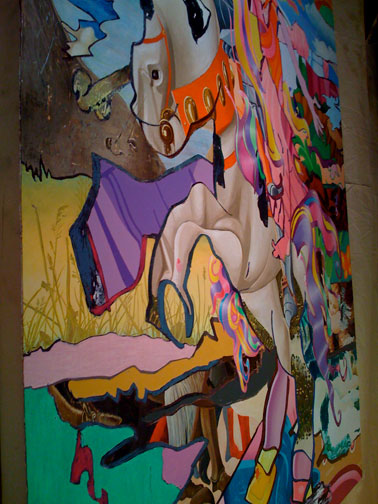
The active canvas in the studio, Joan of Arc Riding My Little Pony, nears completion. It's arrived at that exhilarating state where minor calibrations yield huge returns. Thought you'd appreciate a glimpse before it takes the final leap.

The active canvas in the studio, Joan of Arc Riding My Little Pony, nears completion. It's arrived at that exhilarating state where minor calibrations yield huge returns. Thought you'd appreciate a glimpse before it takes the final leap.

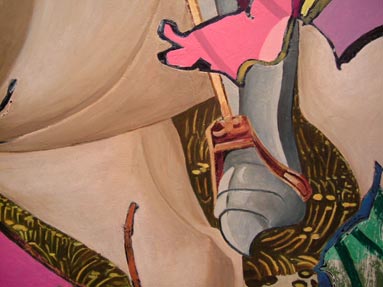

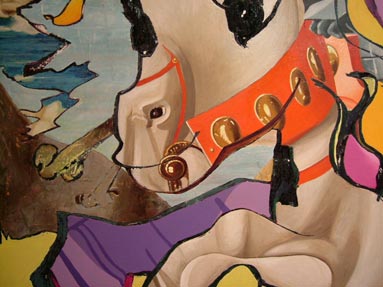

These details and horizontal core samples document the current state of the active canvas, Joan of Arc Riding My Little Pony.
Presently, the surface resides at a noteworthy junction between having executed Old Master quotes (which finds me inhabiting some projection of these previous painters’ experience) and inventively resolving the surface to a place where the painting resides as an unquestioned visual fact.
 |
 |
 |
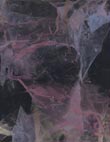 |
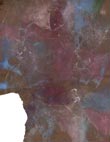 |
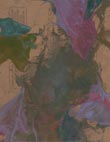 |
 |
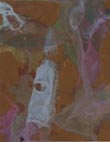 |
 |
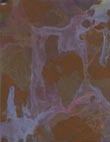 |
To keep it smooth and receptive for glazing, I recently wet sanded the active canvas, Joan of Arc Riding My Little Pony. Abraiding the surface brings up issues.
The dusty trace elements transferred to the sandpaper reconstitute themselves into new images – atomized versions of the original.
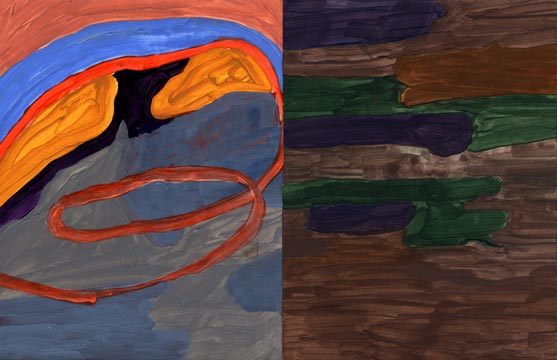
In the ongoing stream of monochromatic color-field diptychs – most of them destined to serve as support for the pop stoppage series – the above painting recently leapt ashore unannounced, like an as yet-unidentified species proffering itself for the evolutionary gambit. Time will tell if it proves to be the first of an entirely new body of work or a fulfilled conclusion in and of itself…assuming such a distinction is even sensical.
 |
 |
 |
 |
 |
 |
 |
 |
 |
 |
 |
 |
 |
Today’s post consists of one-time wanting pop stoppages since retrofitted to weather storms of criticism.
For purposes of comparison and intrigue the thumbnail pop-up windows offer access to each work’s original, pre-retrofit state. (note: The first three retrofits lack images of their prior state because I hadn’t yet recognized the value in documenting them, but feel they deserve to accompany their brethren).
One especially interesting thing about this little reclamation project is that I could only arrive upon a satisfying composition through additive means, since I couldn’t remove or alter the earlier, fixed state. This was the project’s liberating restraint.
 |
 |
 |
 |
 |
 |
 |
 |
 |
 |
 |
 |
 |
 |
 |
 |
 |
 |
 |
 |
One of the great things about a painting is that, though it is material, much of its power and meaning is derived from the abstract principles it triggers in the mind. For example, today’s post of collages serves as material representation of the concept of closed-loop manufacturing.
Just like each of life’s moments refashions the next, the byproducts of artmaking can spark new creation in the form of upcyclable raw materials.
A deep satisfaction of my earlier career as a performance artist - a migratory monologist - was its extreme resource responsibility. Warehousing the stories in my head, I could jump up on any stage, before any gathering, with all my inventory-on-hand and burn only calories. The sole, lingering byproduct posited with each audience was memory.
Yet in the decade I traveled the US performing, my painter nature pursued. I had to acknowledge the irony of being one who likes to trod gently yet practices a form of art that may create non-biodegradable material objects. (Hence, this soon to be windpowered blog and the virtue of this virtual venue for painting distribution.)
So, painting is an arena for considering the reality that we live in a material world.
Painting, as an act of manufacturing, prompts me constantly to look for ways to increase productivity, minimize expenditures and improve my health (and the planet’s) by eliminating or, at least, reducing toxicity and waste. All this while, necessarily, enhancing the quality and value of the product - the painting. In short, I strive to implement the principles of Natural Capitalism in the practice of artmaking.
At times, I use newspapers mined from my tenement building’s recycling bin to form stencils or abrupt edges and try out ideas before confidently committing them to oil. These scraps become invested with intention and information, authenticity born of utility. Each piece of paint-splattered paper has enhanced value, carrying the mark of having been, at one point, indispensable. Then there’s the parallel history spelled out in the newsprint itself. In using these mere byproducts of process as constituent elements for collages, what was waste yields a novel new expression. That, in turn, can feed into the pipeline of works still in the artistic equivalent of R&D.
I take delight in realizing that this can be considered a best practice in the world of sustainability. And though it’s probable that my grandfather might have called this so much manure on the fields. In a way, he’d be exactly right.
Mild Tangent:
In my own broad example of biomimicry, I have long used the recycling bin outside my apartment door as a fertile resource for the raw materials of artmaking. It has yielded the ongoing series of magazine paintings and pop stoppages. But this innovative use of soda bottles as building materials takes the constructive nature of pop stoppages to another level.
My particular intervention in the pop bottle’s life-cycle upcycles only the labels, so the art on the wall could be made of the wall.
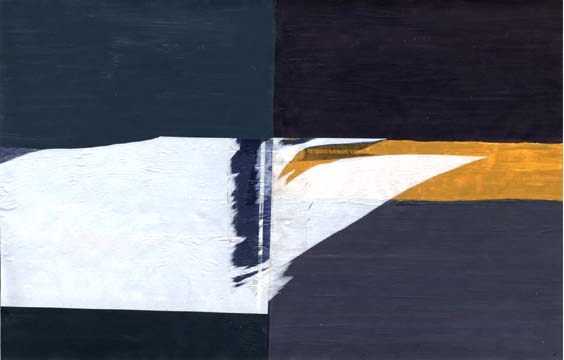
Since 1999, I’ve been building and rebuilding a soda bottle ziggurat above my kitchen sink.
The recycling bins for the tenement building in which I reside provide a real-time archeological survey immediately outside my apartment door. Every time I emerge from my abode, I am greeted with a trove of nominally recyclable refuse. Sometimes, egress is impaired by these discarded scraps of what consumer culture can’t consume.
This bevy of abandoned raw material-at-the-ready is compelling for an artist/scavenger. The objects bear an aura of authenticity that comes from the absence of any presumptive claim of value – save for the street industrialists who ply in the refund trade.
I wonder if we will be known to future peoples by the objects preserved in our museums or the objects preserved in our landfills? Perhaps the distinction won’t hold. Will petroleum bottles – currently invisible on account of their ubiquity - be the defining pottery of our epoch?
My recycling bin "dig" began in a fit of pre-millennial fever when “magazine paintings” – like “custodian weave” – arose from a practice of using reclaimed magazine pages as a painting support. Liberating me from any stricture of perceived scarcity, these pre-printed pages presented a populated tabula rasa as the iconic “blank canvas” - a nod to neutralizing media overload through will and focus.
From such a perspective, two-liter plastic soda bottles also proved a fecund artmaking resource. In peeling off the plastic label I discovered the glue strip would resist, tearing in unpredictable, strangely graceful ways. The sharp line of the tear was like a Matisse cut-out born of chance akin to that of a Duchamp stoppage.
When glued onto color field paintings, these torn shapes were an inversion of the magazine paintings’ populated tabula rasa – here, it is the line that is populated with mercantile ephemera. In sum, this way of working yielded a complex visual image with minimal apparent effort, using the means available.
So seven years ago, I made a sketchbook series. I learned the nuances of different brands and the secret of “aging” bottles – weakened adhesive affects each label’s tear the greater the distance from its bottle’s vintage.
Tearing the label from its bottle proved meditatively integral to the composition process, so instead of merely accumulating torn labels I began stockpiling entire scavenged bottles – storing them “in-house” – atop the kitchen cabinets, eventually constructing an installation that reached to the ceiling and topped out at just under a hundred bottles. When Mayor Bloomberg halted (temporarily) much of the NYC recycling program, this pop bottle ziggurat assumed treasure status.
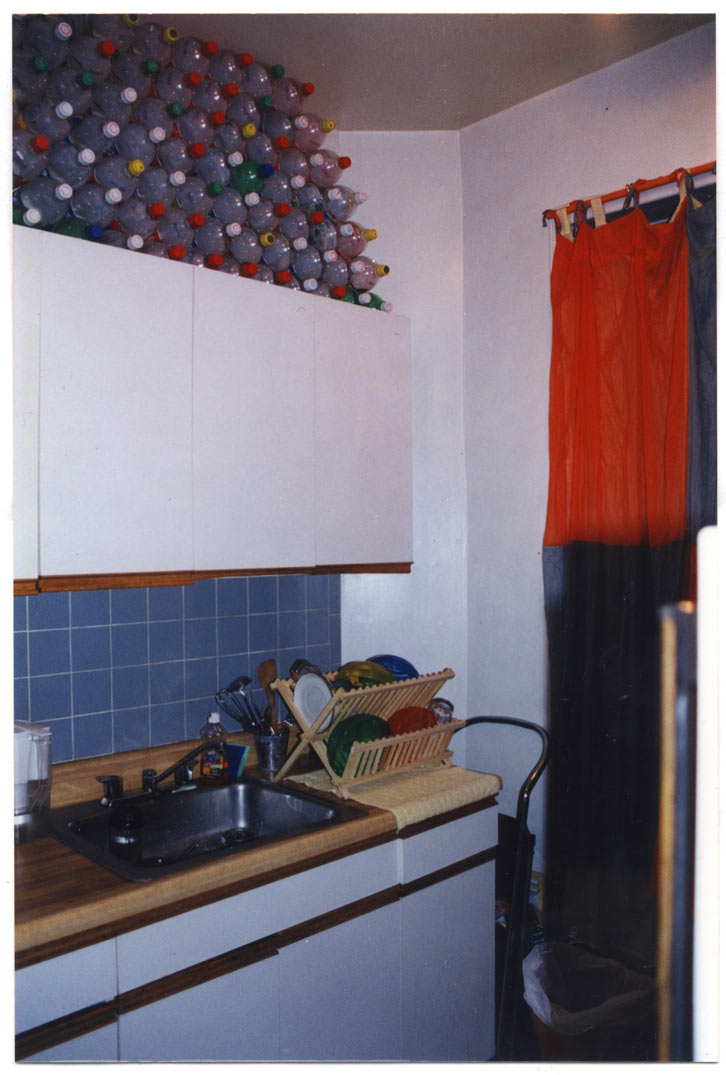
Then, as can happen, life intervened; time passed with no second series. Roped into place, the plastic bottle structure was an ever beckoning makeshift barometer - popping and groaning each time the radiator kicked on or the oven was in use.
At times the expanding bottles exerted so much pressure that they would break their bonds and fly, falling around the kitchen in a petroleum-laced avalanche. But I always rebuilt the ziggurat, knowing someday I would return to them.
Today is someday. I no longer value being a custodian of taunting potentiality. What will follow for the next few weeks are the chronological results of making this the right time to work through each vintage of my pop holdings.
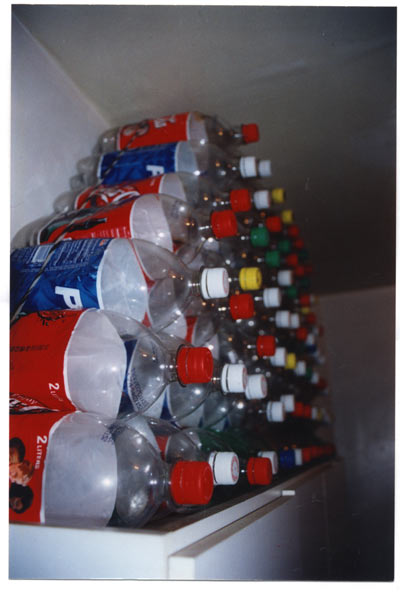
 |
 |
 |
 |
 |
 |
 |
 |
 |
 |
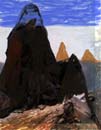 |
 |
 |
 |
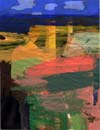 |
 |
 |
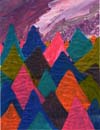 |
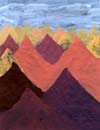 |
 |
 |
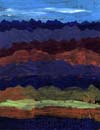 |
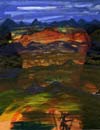 |
 |
 |
 |
 |
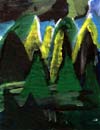 |
 |
 |
 |
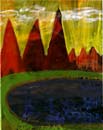 |
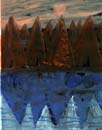 |
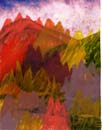 |
 |
This post struck upon a universal aspect of process in the life of every artist. It reveals the development of a thing painters, dancers, writers, photographers, all come to recognize - or have pointed out to them by others - as the artist’s “vocabulary.”
The ambition is to stretch it, inhabit it, move beyond it, eradicate it and start again. In the life of any great - Dylan, De Kooning, Streep, Barysnikov, Joyce - you see it embraced and cast off over and over.
This process, however, is hardly the sole province of acknowledged greats. It’s abundantly evident in the refinement and practice of eponymous yet anonymous local graffiti writers, worldwide.
When mountains began to rise from the horizon of my drawings a while back - lining the tops of compositions, forming eyelids and eyebrows - I delighted in having entered uncharted territory.
The iconic aspect of this particular new vocabulary struck a deep chord.
Freed from reliance on any roadmap, I set myself the charge of attaining an image and a way of working that might enable me to experience a landscape I could imagine walking into.
Several latenights into the trek, the works mounting on the wall suddenly looked like tags - shorthand symbols unlocking imagination and evoking a universal adventure through one-off expression.
These peaks seemed to rise beyond caricature in the same way great tags snake through graphic and font, infusing both with art and dusting culture across urban grit.
Among other things, a writer tags a wall or train to record his or her presence in the world and that particular corner of it. With these “Mountain Tags” I realized I was doing something similar but with a twist: recording my presence in or experience of a landscape of my imagining. Both modes of expression recognize valuing a disciplined refinement of one’s vocabulary and the humanizing worth of including that process in the public square.
So this post reveals an evolution of new vocabulary designed to read as a sign, a signifier, a refined, Romantic tag: “Mountain.”
The above images are an unedited sequence of this endeavor to date. The 32nd attempt - which I published previously as “premise en scène” - was the initial mountain painting that in some ineffable way satisfied my desire. But that’s just me, you, of course, are free to determine your own peak experience.
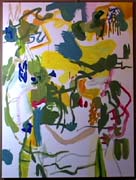 |
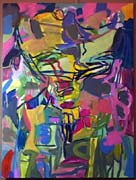 |
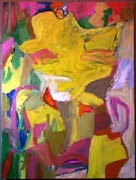 |
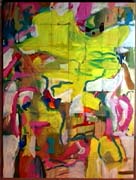 |
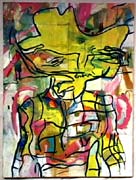 |
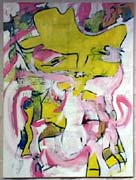 |
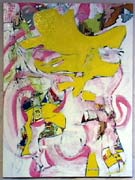 |
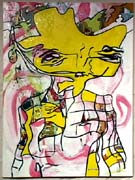 |
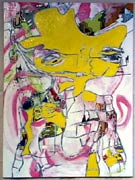 |
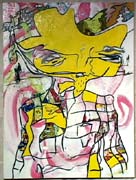 |
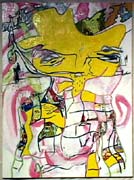 |
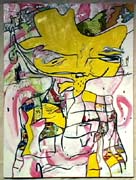 |
Here's a selection of some of the key states of "Goya Moment." For a while, I felt confident the painting was finished as it appears in the tenth state, above. But that was wishful thinking.
There are no shortcuts. The painting decides when it's done.
For all the intervening phases of development, see the time-lapse DV (QT 8.5 MB).
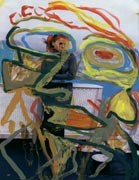 |
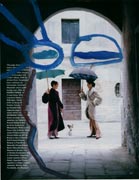 |
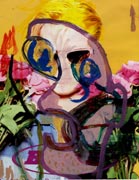 |
The golf club is analogous to the paint brush. Despite an afternoon’s circuitous trek through compelling pastoral vistas punctuated by dramatic physical exertion, it doesn’t take long to realize that, fundamentally, golf is a mental discipline. Last week, for the first time, I tried my hand at a round of golf and, in this one regard, the terrain was familiar.
For years, Chuck Close has used golf as a metaphor to offer entrance into his particular painting process. In searching the web, I found a fascinating and extensive 1987 interview with the artist wherein he explains:
Golf is kind of interesting. It's a stupid sport, but I like it because it's the only sport that I can think of in which you move from general to specific. When you're standing at the tee, you often can't even see the green or the hole where you're going to ultimately end up. So the first stroke is just out there somewhere, and the second stroke attempts to correct and refine the direction. On a par four course, by the third stroke, you should be on the green. You're now getting very close to what you want, and then you hopefully can putt out on the fourth stroke. Now you're someplace very specific --this very small circle. I like the idea of having a certain number of steps to take to move from general to specific, and I like the idea of building a painting rather than painting it. So I conceived of each one of the squares in the original oil paintings as a kind of par four course. But just to make things more interesting, I would tee off in the opposite direction.
•••
(Y)ou always have the possibility of coming in a stroke early with a birdie. Clearly, I'm not going to stop until it's right. I'll put on as many strokes as necessary, just as in playing golf you've got to keep making strokes until you find the green. So, you could get a bogey or a double bogey or you can have the aesthetic equivalent of being mired down in the sand trap, where you keep making stroke after stroke after stroke and not getting anywhere.
With the three new paintings posted above, I was definitely going for the green, aiming to bring the works to resolution in an economical, direct manner. As to whether they hit the mark or warrant the charity of a mulligan, I’ll let you be the official scorer.
In the end, for my maiden round of golf, I shot a 56 over nine holes. Gotta work on my putting.
 |
 |
 |
The golf club is analogous to the paint brush. Despite an afternoon’s circuitous trek through compelling pastoral vistas punctuated by dramatic physical exertion, it doesn’t take long to realize that, fundamentally, golf is a mental discipline. Last week, for the first time, I tried my hand at a round of golf and, in this one regard, the terrain was familiar.
For years, Chuck Close has used golf as a metaphor to offer entrance into his particular painting process. In searching the web, I found a fascinating and extensive 1987 interview with the artist wherein he explains:
Golf is kind of interesting. It's a stupid sport, but I like it because it's the only sport that I can think of in which you move from general to specific. When you're standing at the tee, you often can't even see the green or the hole where you're going to ultimately end up. So the first stroke is just out there somewhere, and the second stroke attempts to correct and refine the direction. On a par four course, by the third stroke, you should be on the green. You're now getting very close to what you want, and then you hopefully can putt out on the fourth stroke. Now you're someplace very specific --this very small circle. I like the idea of having a certain number of steps to take to move from general to specific, and I like the idea of building a painting rather than painting it. So I conceived of each one of the squares in the original oil paintings as a kind of par four course. But just to make things more interesting, I would tee off in the opposite direction.
•••
(Y)ou always have the possibility of coming in a stroke early with a birdie. Clearly, I'm not going to stop until it's right. I'll put on as many strokes as necessary, just as in playing golf you've got to keep making strokes until you find the green. So, you could get a bogey or a double bogey or you can have the aesthetic equivalent of being mired down in the sand trap, where you keep making stroke after stroke after stroke and not getting anywhere.
With the three new paintings posted above, I was definitely going for the green, aiming to bring the works to resolution in an economical, direct manner. As to whether they hit the mark or warrant the charity of a mulligan, I’ll let you be the official scorer.
In the end, for my maiden round of golf, I shot a 56 over nine holes. Gotta work on my putting.
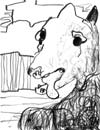 |
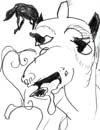 |
 |
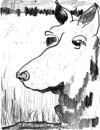 |
 |
 |
 |
 |
 |
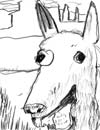 |
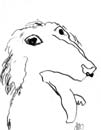 |
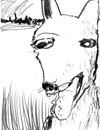 |
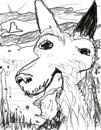 |
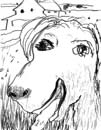 |
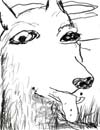 |
For a recent two week stint, I was bestowed the honorific of "Top Dog," leading a pack of three rapturously doggy dogs. The above drawings were created while in the midst of these alternately swirling, dozing and nudging pups.
Speaking of dog days, I ran into a couple from Denver who had escaped the recent mile high heat wave of 105° fahrenheit. They said they found sweltering New York a relief! In the ongoing "debate" as to whether global warming is real, it got me thinking that we've entered a stage where the only remaining operative question is: Are we going to believe our own eyes?
The drawings are arranged in the order of their creation from first to last. Two previous posts are from the same body of work: "pop_galactic_lassie" would be fifth in the series and "pup pant" would be fourth from the last.
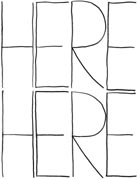 |
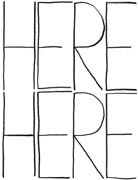 |
 |
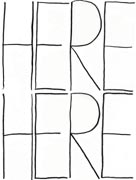 |
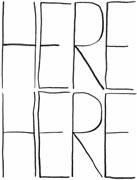 |
 |
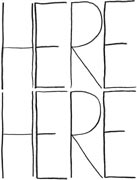 |
 |
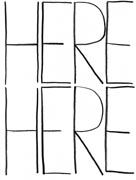 |
I suppose you could suppose a “word drawing” is a one-off composition. Frequently, though, a series is required to discover a fulfillment of the vision.
Today’s post offers the lot of ‘em arranged chronologically, first to last.
One happy outcome: clicking through the series reads as an animation.
Which one finally made it into the gallery? You’re welcome to guess...or you can scroll for the answer.
- third drawing, upper right corner
 |
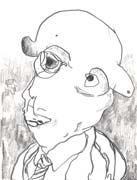 |
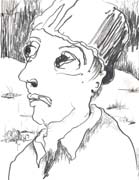 |
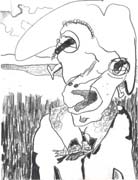 |
 |
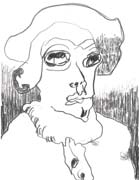 |
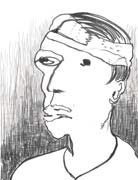 |
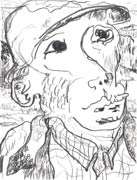 |
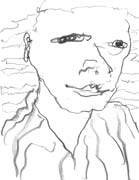 |
Last week, I was upstate doing some construction work. These are some of the drawings I made after the day’s labor.
Incidentally, the work site was in Sullivan County, New York, the home of Yasgur’s farm and the legendary Woodstock concert. For years, the location has been preserved as a sort of shrine to those three August days of 1969. It features a monument listing the performers, a big neon guitar sculpture and plays host to weekend farmer’s markets and arts and crafts festivals.
Last Summer, after much negotiation, the hallowed ground was broken for a performing arts center that, among other things, will serve as the summer home for the New York Philharmonic. From one longhair music to another.
 |
 |
 |
 |
 |
 |
 |
 |
 |
 |
 |
 |
 |
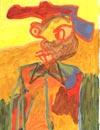 |
 |
 |
 |
 |
 |
 |
Today’s post is an inclusive offering of “latenight paintings.” This is an adaptive painting habit which has arisen recently. The end of each day has become the time for a few quick minutes of wild liberty.
During the daylight hours, it’s been all business: working the current oil painting, honing essays, connecting with Thank You Project and TINSQUO inquiries, laying the groundwork for longterm pieces, seeing notable NYC shows and simply remembering to eat. Spontaneously, just before bed, I started doing quick acrylic paintings a few weeks back.
The day’s close is now a free, inviolable space of acceptance where the inner-censor is escorted out the door. I’ve noticed that when one area of my painting practice attains a high level of resolve, a counterbalance often develops in response that yields fresh abandon and lively painting.
You might recognize two earlier posts, “alive_again_naturally” and “seeing_reticulated_canopy,” as part of this incipient series. I’ve included them, here, in the chronological sequence that's unfurled this month.
Opening up similar avenues of liberation is the way my painting practice is revitalized time and again. So, this humble series may represent the most crucial of my works. Here also, over time, a deep structure starts to evolve that - in the life of any painter - is noteworthy for its willingness to court failure.